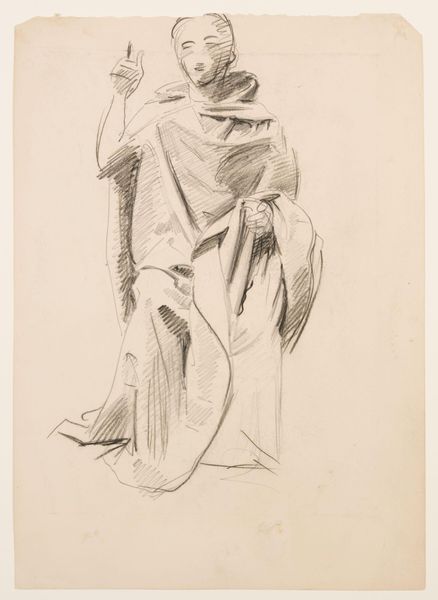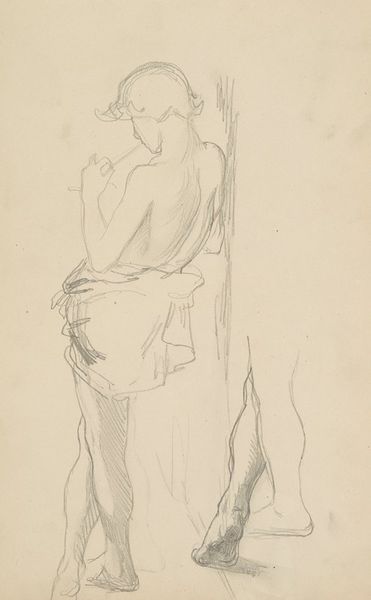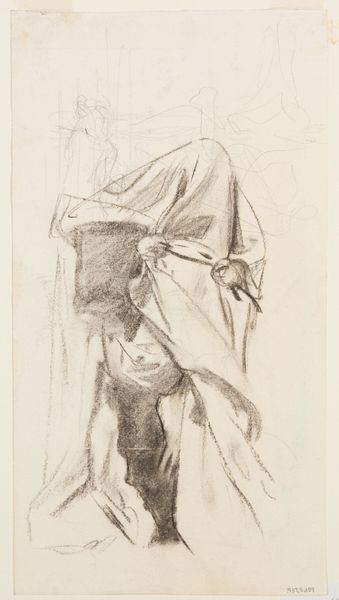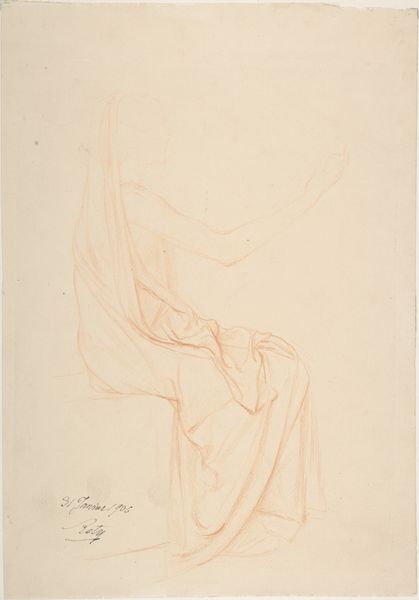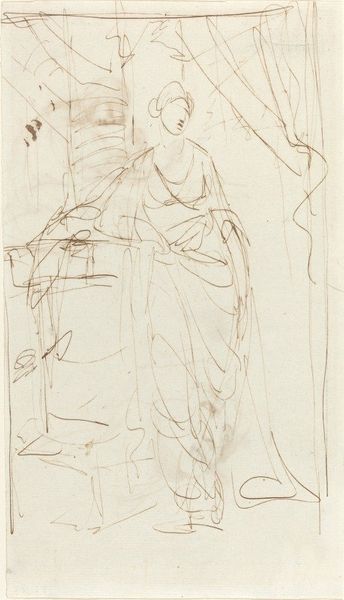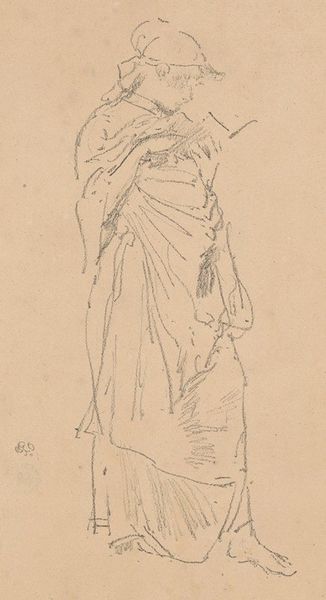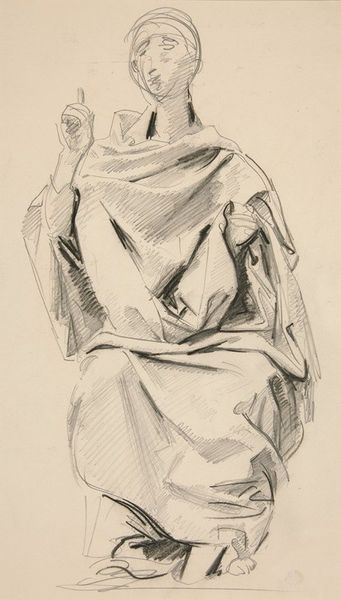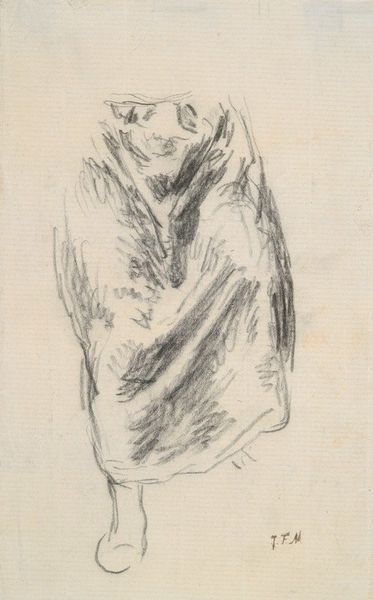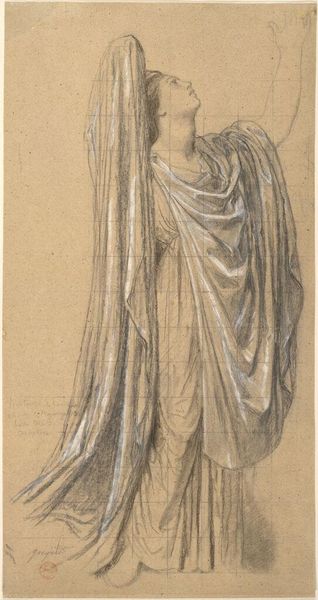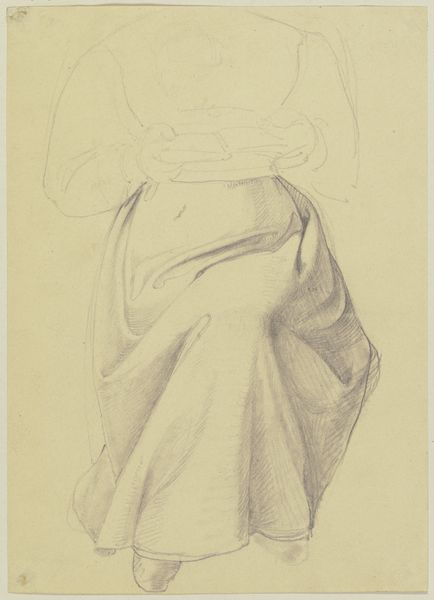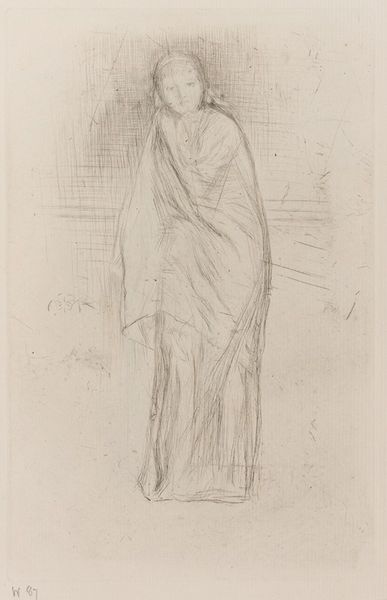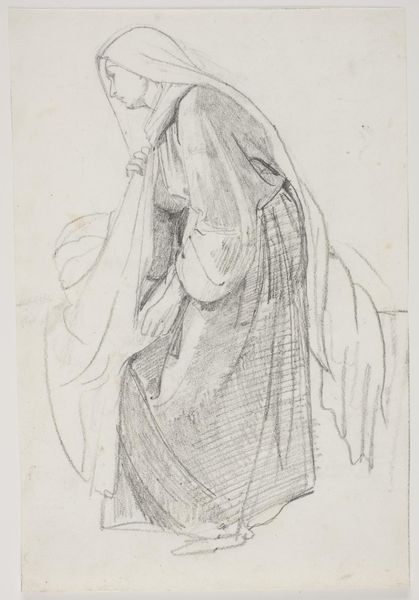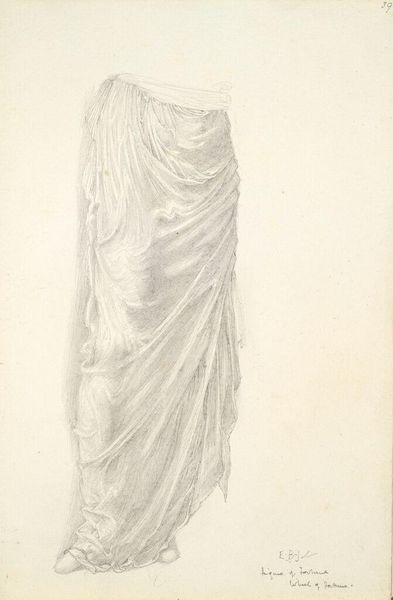
drawing, pencil
#
portrait
#
drawing
#
light pencil work
#
art-nouveau
#
pen sketch
#
pencil sketch
#
figuration
#
personal sketchbook
#
pencil drawing
#
ink drawing experimentation
#
pen-ink sketch
#
pencil
#
sketchbook drawing
#
portrait drawing
#
pencil work
Dimensions: sheet: 45.5 x 29 cm (17 15/16 x 11 7/16 in.)
Copyright: National Gallery of Art: CC0 1.0
Curator: Instantly, I see yearning. Look how the woman's face tilts, catching the light as if she is hoping to glean a secret. Editor: Welcome. Today, we are looking at Augustus John’s pencil drawing, "Standing Draped Woman," created sometime between 1907 and 1910. It’s a study in light, shadow, and form, quite in the style of art nouveau. Curator: Form is right. She’s almost swallowed by that voluminous draping, and yet, the lightness of the drawing prevents it from becoming overwhelming. She's trapped, or rather cocooned, but also on the precipice of something new, perhaps metamorphosis, symbolized through her clothes and yearning. Editor: And John certainly places the woman as central to the image, despite the drapery, as portraits often seek to depict an idealized vision of the individual, or represent her status through costume. I do find that while drapery can function that way, historically speaking, the somewhat rough strokes here read less as grandeur, and more of a... preoccupation on the artist's part with her face? Curator: Preoccupation definitely. Look at how light bounces across the curve of her brow, against the bridge of her nose; notice the angle of her neck and shoulder, and how she stands just outside of being balanced by that single point. The rest of her, even in shadow, is just... waiting. It evokes some deeper introspection and sense of questioning, that is really beautiful here. Editor: This makes me think, is there something subtly subversive in it? John elevates his model to...this status. We have very little sense of context as to where she is, who she is to be drawn in a sketchbook? Who knows, perhaps we aren't meant to see anything beyond a private moment, immortalized in charcoal forever? Curator: Maybe its simplicity is its subversiveness. No need for grand setting or symbolism when you can capture a soul in a sketch. And let’s acknowledge the power of drawings like this too, especially in museums: quick, immediate and personal, they show us the artists process. Editor: Agreed. There’s a certain honesty in a medium like this that connects you to the artwork, that's really unmatched in other ways, when something isn't overly complicated with intention or theme, but lets process lead. Curator: Absolutely. A glimpse into a past both fragile and enduring.
Comments
No comments
Be the first to comment and join the conversation on the ultimate creative platform.
